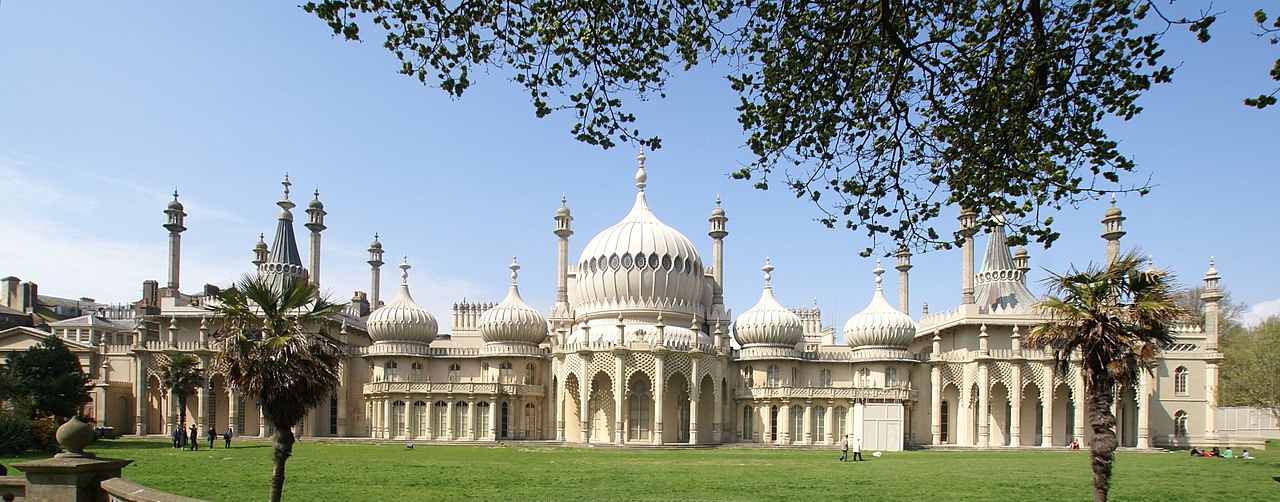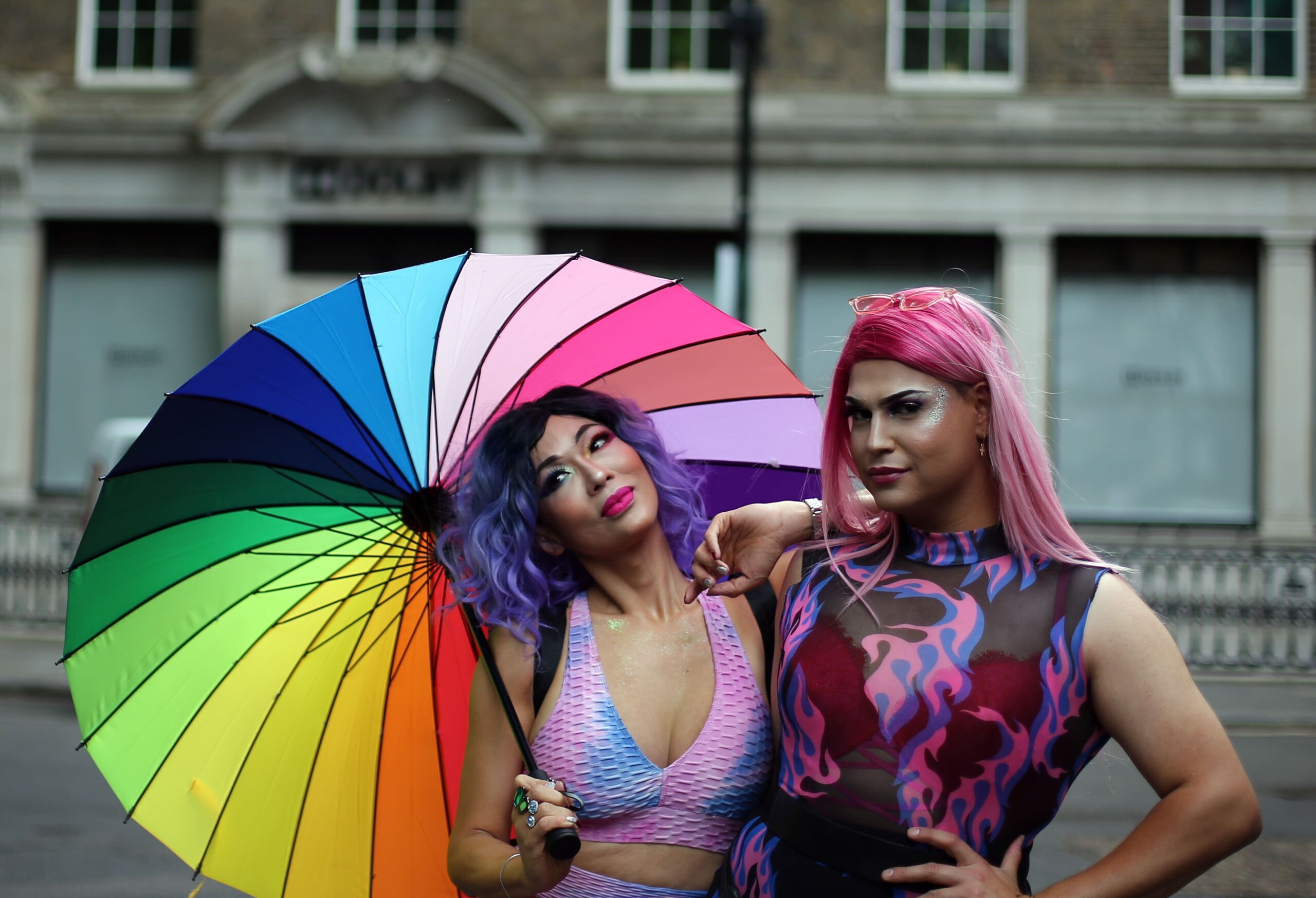This story is part of a series of travel and culture features spotlighting London, U.K., this summer.
While Pride Month may be coming to a close, the U.K.’s hot trans summer is just getting started.
From the Conservative government leaving trans people out of the conversion therapy ban and the public broadcaster publishing an article calling trans women predators, to the ballooning wait-lists for accessing gender-affirming care and the continued denial of non-binary identities, the last year has been difficult for trans and non-binary people in the U.K. But political adversity won’t stop trans people from living our beautiful, brilliant lives.
We’re more visible than ever, and trans-focused events have never been more important. These spaces give trans and non-binary people a place to come together, to grieve, to fight, to cheer and clap and celebrate who we are. Despite the U.K.’s current political climate, London remains a welcome place for all stripes of travellers—and there’s no end of ways to entertain yourself.
Xtra spoke with trans people behind some of the summer’s must-see trans happenings, and got some insider advice on hidden gems to check out. Whether you want to watch Europe’s first LGBTQ+ stripper collective, discover a piece of non-binary history or take a day trip to the trans capital of the U.K., London shows that there is plenty of good news among the bad when it comes to being trans this summer.
London Trans Pride returns on July 9. The event, says co-founder Lewis G. Burton over Zoom, is “obviously going to be probably the biggest event in the trans calendar.”
The march began in 2019 as a response to London Pride failing to prevent anti-trans protestors from hijacking the 2018 parade, eventually allowing them to remain at the front, ostensibly leading the parade. Around 1,500 people showed up that first year.
London Trans Pride is a protest, in the vein of early Prides: a march through the streets, “shutting down central London,” Burton says. The march will begin at Wellington Arch and end up in the historically queer Soho Square, where activists, actors, musicians and community members will address the crowd.
Burton says the march has a grassroots energy that’s different from larger events like London Pride. There are no corporate sponsors, just community members coming together and talking about policy challenges.
“Rather than slapping rainbows on things, we’re tackling the real issues that affect our community, and talking about them, giving them visibility,” Burton says.
Over 10,000 people turned out in 2021, and Burton says they’re expecting even more this year.
“We get trans people from all across the U.K. and the world,” they say. “Some of these people don’t really have friends or a community in their small towns or villages, so it’s the one day of the year that they can see and be with other trans people, be out and proud and visible and living their authentic selves.”
Outside of organizing the annual march, Burton is also an artist, producer, curator, drag performer and DJ—the British magazine i-D calls them “matriarch of the queer scene”—who’s been running the club night Inferno, a combo rave and performance art, at venues across London since 2015.
Burton says Inferno began as the antithesis of the “very white, very cisgender, very gay, very man-centred” nightlife of the mid-2010s, as a space for Burton and their fellow queer and trans friends to show their art.
“As I’ve stepped more into my own trans-ness, I really noticed that disparity,” Burton recalls. “We’ve always been platforming and supporting trans people anyway, but I think I’m just more of an advocate for it now, and do it with more intent.”
On August 5, Inferno is collaborating with Harpies, the first LGBTQ+ stripper collective in Europe, to put on a night celebrating queer and trans sex workers in a huge Hackney warehouse. It’s the kind of event that wouldn’t have seemed possible even a few years ago. As the U.K.’s political and media spheres have embraced transphobia, the queer and trans nightlife community have embraced unapologetic inclusion.
“I feel like the community in general is a lot kinder. We have a lot more conversations around privilege and around accessibility,” Burton says. “It’s been a pretty great thing to see and watch as it evolves, and evolve with it.”
If you’re not in town for London Trans Pride or Inferno’s next party, Burton recommends dropping by Dalston Superstore in East London on Wednesday nights for TransVisions, run by fellow London Trans Pride founder and Harpies ringleader Lucia Blayke.
“It’s hard at times because the political climate right now is absolutely dire and we’re constantly under attack,” Burton says. “But we’ve just got to keep fighting and keep our head up, because we have no other choice.”

Credit: flamenc/CC
For anyone looking to get out of the capital, look no further than Brighton, considered the true trans capital of the U.K. An hour south of London by train, Brighton has a reputation as the U.K.’s queerest city. While there’s enough here to entrance tourists for a weekend or longer, its proximity to London—and return rail service that runs till midnight—makes it ideal for a day trip. It’s also probably the place with the most trans people per square mile.
“It’s amazing. I barely know any cis people,” says Sarah Savage, one of the founders of Trans Pride Brighton, who now serves as its chief executive. “And that’s not because I’m avoiding cis people!”
Since 2013, the Brighton’s been home to Trans Pride Brighton—the first trans-centred official Pride event in the country.
“There were a couple of groups of local trans people who wanted to create a space just for trans people in the Pride context,” she recalls. “One of our first slogans was ‘We put the T first in LGBT.’ That’s still my favourite one.”
That first year had around 800 people, a protest march, a stage with comedians and musicians and a few little community stalls. The next year, Savage remembers looking out the top-floor window of the Marlborough Pub (now The Actors) before the march started, and not being able to see the pavement under a swarm of trans people and their allies.
Since then, Trans Pride Brighton has “snowballed”: there are a dozen or so events throughout the city in the week leading up to this year’s Pride on July 16, including a comedy night, club nights and sports. My Genderation, a film collective including Owl and Fox Fisher, is celebrating its 10-year anniversary on July 14, and the annual trans film night will see trans-made short films from all over the world play to a packed house at Duke of York’s Picturehouse on July 15.
This year also marks another turning point for Trans Pride Brighton, as the founders are opening the Trans Pride Centre—the first trans and non-binary community centre in England. (There’s already one in Belfast, Northern Ireland.) “We needed a space in Brighton that’s not alcohol-centred, that’s free to attend,” Savage says.
She describes it as part meeting space and part charity incubator, offering small, local trans groups a cheap or free place to gather, as well as providing more detailed operational support to help them grow into formal charities or groups. The first people making use of the space are TransSober, a peer support group for sober trans and non-binary people.
“They’ve got no money, you know, they’re just people who want to meet and live their best life. We’ve got an opportunity to give them a place to create that,” Savage says, her voice catching in her throat. “Brighton gives the perfect place for stuff like that to happen. It wouldn’t happen anywhere else.”
Unsurprisingly, Brighton also has some of the best queer nightlife in the country. Savage recommends Polyglamorous and Traumfrau as places to go dance the night away. But her daytime pick is to take a 20-minute bus to Saltdean Beach (about seven kilometres east), or going to the 24-hour Market Diner for an impossibly huge breakfast. While Kemptown is the historic queer part of town, she says that in Brighton, the trans community is everywhere.
“There’s trans people working in all the bars in town and all the restaurants. There’s literally thousands of us,” she says. “There’s even trans non-binary people in local government who help us get grants.”
Trans Pride Brighton’s success and growth is a testament to how far the community has come, and a reminder of how much further there still is to go.
“In 2013, when we began, it felt like the cultural landscape was changing permanently in favour of trans rights and non-binary rights. And then, somewhere around 2015, 2016, it’s just taken a nosedive,” Savage says. “Trans Pride has become like the one place where trans success is celebrated, where people are lifted up.”
When you enter the Trans Pride Centre in Brighton, you’ll see an array of framed protest signs: “Black Trans Lives Matter,” “We Will Not Be Converted,” “Enough.” They’re part of an exhibit from the Museum of Transology, the U.K.’s largest collection of objects donated by trans, non-binary and intersex people.
Its founder, E-J Scott, decided to start the museum in 2014, in part as a response to how institutions were gearing up to commemorate the 50-year anniversary of the partial decriminalization of homosexuality in England and Wales.
“In the exhibitions that were happening, the material archival resources that are left to rely on, looking at gay men’s histories in the past, [it was] the police records that criminalized us, it was the psychology and medical records that pathologize the homosexual male community, and it was the media reports that sensationalize their lives,” Scott says. “In 50 years’ time, we were going to be looking back at trans history, making the same mistakes in history all over again.”
Scott decided to “do some museological direct activism” by collecting objects from their own gender-affirming surgery, then they started community collecting projects in Brighton. He ran workshops, inviting trans people to bring their own objects, archive them and label them, contributing to a collection that would become the museum’s holdings. The work wasn’t just about trans people—it was by trans people, for trans people and rooted in gaining trust in the community.
“I opened up collecting and let people post me their objects,” they recall. He sent participants self-addressed envelopes with postage already paid, so there wasn’t a financial barrier to contributing. The contributions kept coming. “We’ve got probably near on 1,000 objects now. It’s probably the biggest collection of material culture relating to trans lives anywhere in the world.”
Which brings us back to London.
While the Museum of Transology began in Brighton, its collection is housed at Bishopsgate Institute in central London. “The collection is on permanent loan. There are about 30 objects on show at the Whitechapel Gallery at the moment,” Scott says, as part of the We Get to Choose Our Families exhibition. The loan status also means schools, universities or grassroots organizations can borrow objects to put on their own shows, or help kickstart their own local trans object collections.
And anyone in London can go along to Bishopsgate Institute to check out the collection, for free. “You don’t have to show ID to get any of the objects out of the collection,” Scott tells me, beaming. “You can go along, you can look at the catalogue, you can go, ‘I want to see this, this, this and this,’ and the archivist will go down and bring it up to you. They’ll all be in boxes and wrapped in tissue paper. It’s all very exciting—and then you can sit here and almost put on your own extra private exhibition for yourself.”
Part of Scott’s plan for the museum’s 10th anniversary in 2024 is to train transology archivists with every regional trans pride organization in the U.K., and help each of them produce local, community collections to prove that trans people aren’t limited to cities.

Credit: Wellcome Images/CC
Much like trans people are everywhere, we’re also everywhen. Trans people aren’t a newfangled thing that have just showed up in the 2020s; the events and initiatives getting public attention now are the result of years of work by dedicated activists, organizers and artists.
Looking even further back, London is the final resting place of Chevalier d’Éon, a non-binary 18th-century soldier from France who lived for years in London. At various points in their life, they publicly identified as a man and a woman. The British media was obsessed with their gender; the Chevalier’s treatment in contemporary newspapers “really birthed the history of transphobic press in the U.K,” Scott notes wryly. He recommends visitors find the Chevalier’s grave in the St. Pancras Old Churchyard, easily accessible from King’s Cross-St Pancras train station. And if you’re in the mood for more history, you can book at the British Museum to see historic engravings from d’Éon’s lifetime.
In a hundred years’ time, records of what the trans community looked like in 2022 won’t be limited to sensationalist media. Our events make our own history. Our community makes its own space. And we tell our own stories—from one hot trans summer, and beyond.


 Why you can trust Xtra
Why you can trust Xtra